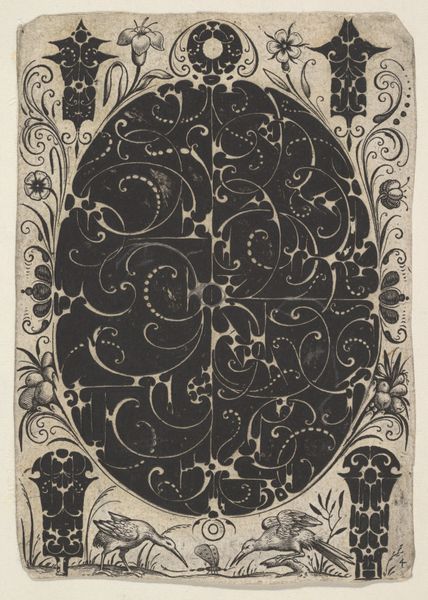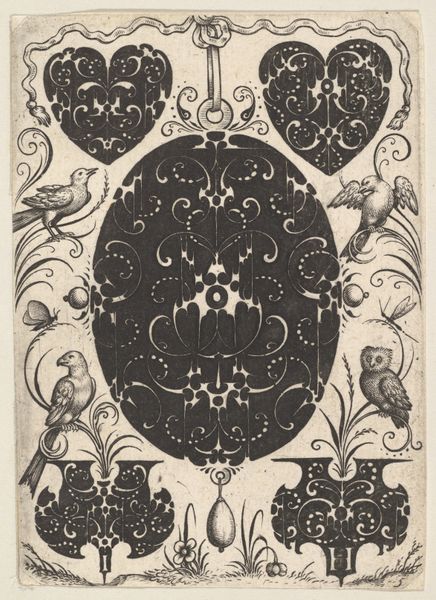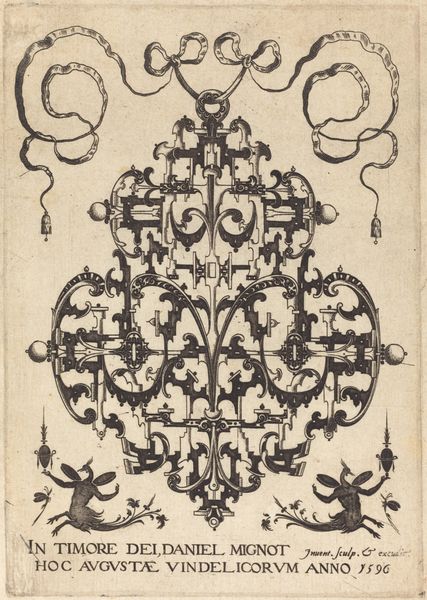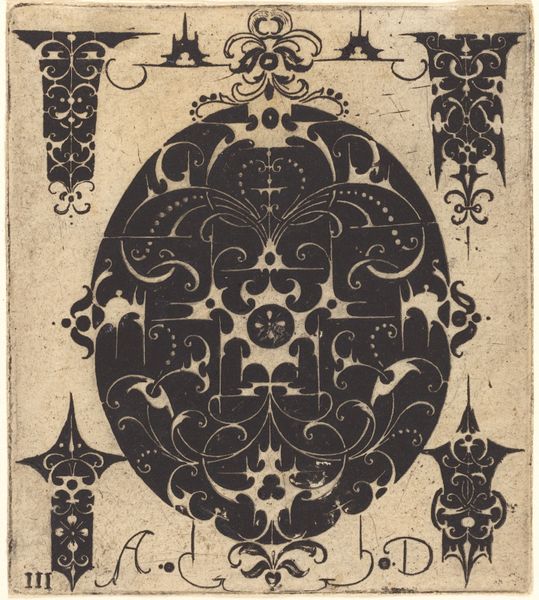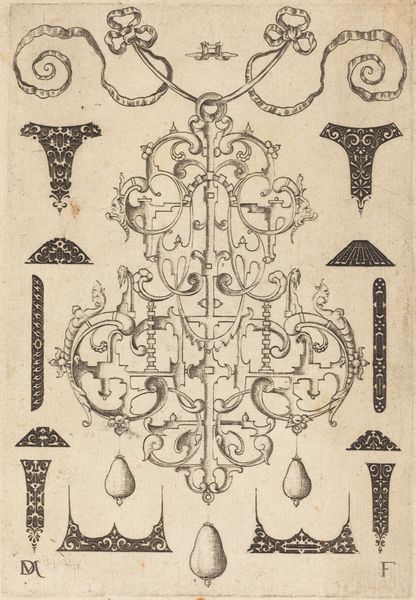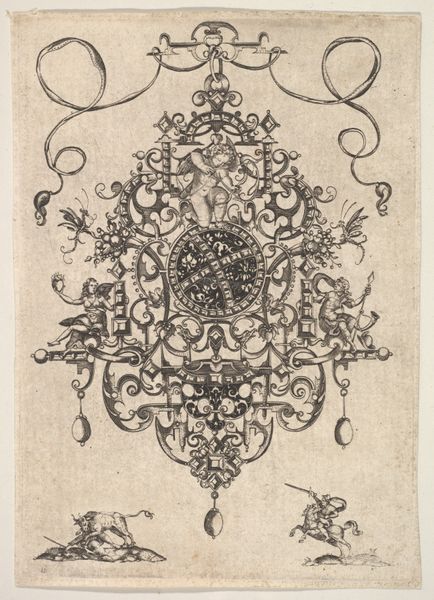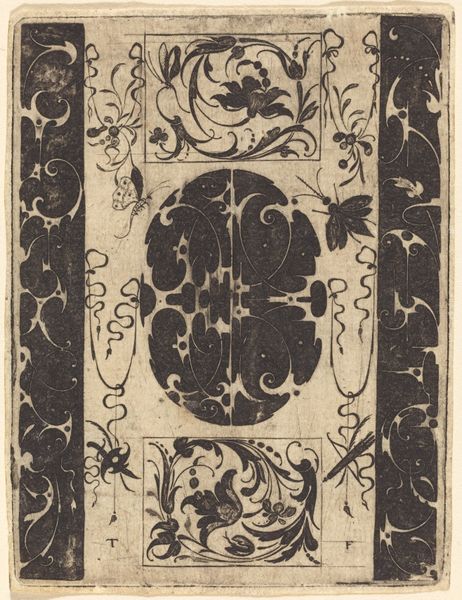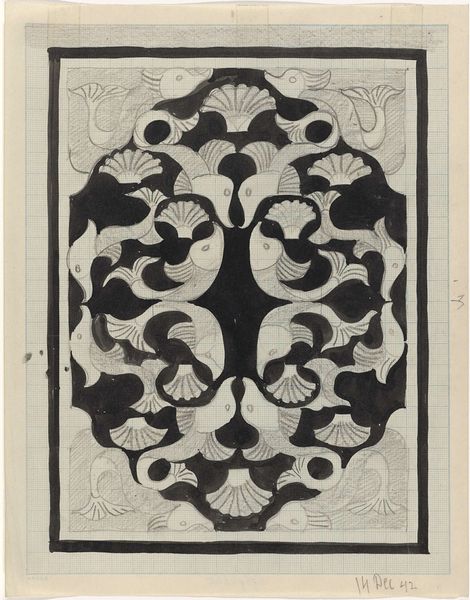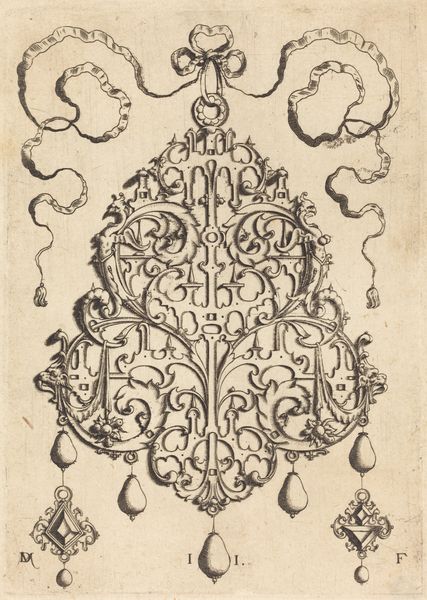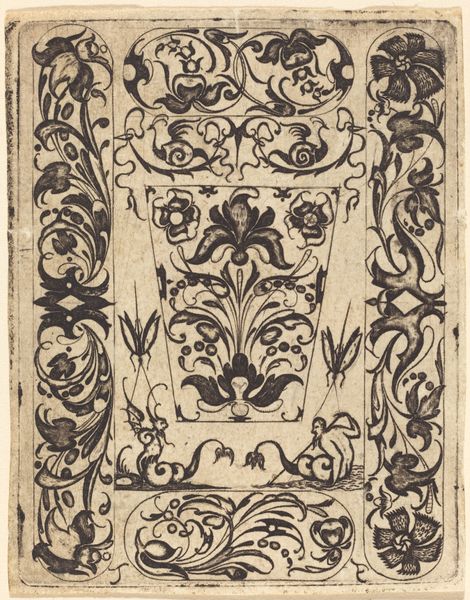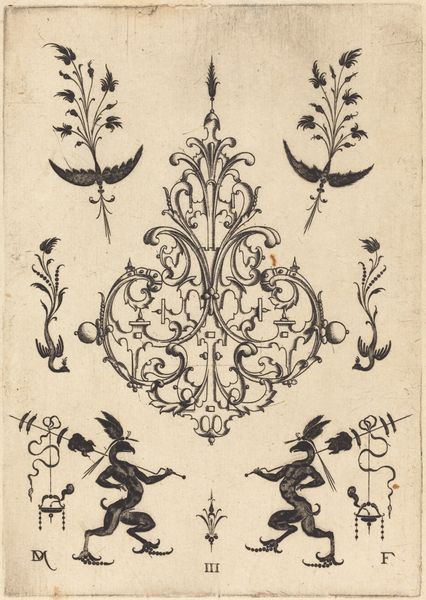
Oval Pendant Decorated with Schweifwerk, Surrounded by Smaller Motifs and Crowned by a Baldachin 1614 - 1619
0:00
0:00
drawing, ornament, print, engraving
#
drawing
#
ornament
#
baroque
# print
#
intricate pattern
#
pen work
#
14_17th-century
#
pattern repetition
#
engraving
Dimensions: Sheet (Trimmed): 4 1/16 × 2 13/16 in. (10.3 × 7.1 cm)
Copyright: Public Domain
Curator: This drawing is an engraving created by Jacques Hurtu between 1614 and 1619. The title, "Oval Pendant Decorated with Schweifwerk, Surrounded by Smaller Motifs and Crowned by a Baldachin," tells us a great deal about its purpose. Editor: It hits you all at once, doesn’t it? So detailed, ornate. I find my eye darting everywhere, like chasing butterflies in a very controlled, very black-and-white garden. It almost feels like staring into one of those old magic eye illusions! Curator: Exactly. Hurtu was designing an ornament, most likely for metalwork. The “Schweifwerk,” or flowing scrollwork, creates a sense of dynamic movement contained within that oval. Editor: It’s such a dense pattern. Are the various symbols placed arbitrarily or by design, how does one make heads or tails of the overall thing? Curator: No element is truly arbitrary in art of this period. Even small motifs like the sea monsters framing the base of the oval had iconographic significance – protectors of the wearer, perhaps emblems of maritime power and mastery. Note the fineness of the engraving, allowing the detailed renderings. Editor: I keep noticing subtle inconsistencies – the tilting crown atop, the variations between both triangular upper shapes and also at the bases with different heraldic supporters—there is a face! I love the human element peeking through that level of intricate craftsmanship! It's both grounded and rather elevated. Curator: Consider the context: early 17th century. The Baroque style flourished; ornamentation was a virtue. Designs like this disseminated new styles widely to workshops across Europe, defining luxury trends and tastes. Ornament was definitely more than simple embellishment at the time, as was display more broadly, wouldn't you agree? Editor: Absolutely. These kinds of patterns can be interpreted as almost like an expression of social standing, of identity even—every swirl and flourish becomes a statement. It’s quite intriguing to ponder what it was to carry something like this pendant around, especially one crafted out of precious material, gold perhaps. Curator: Precisely. This drawing embodies an era where artistry and craftsmanship merged to project power and prestige. Editor: Yes, a window into another time—almost dizzying in its level of ambition, all in the name of adornment. Thank you for providing clarity; otherwise I feel it may have swallowed me whole.
Comments
No comments
Be the first to comment and join the conversation on the ultimate creative platform.
